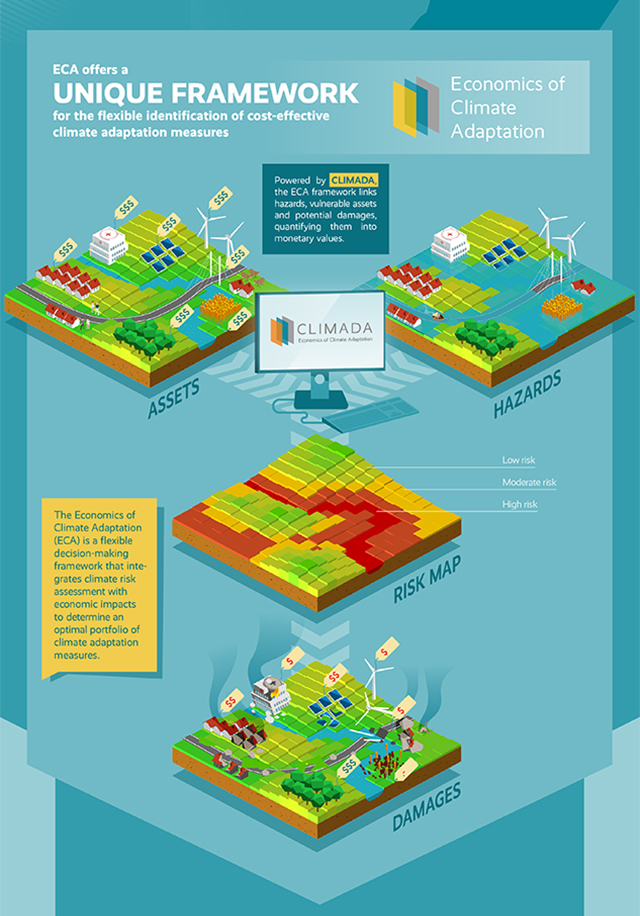
With climate change, the world is experiencing new patterns of extreme weather events. More intense and frequent floods, droughts or storms are affecting populations in urban and rural areas globally. Local and national government are experiencing challenges to respond effectively to the complexity and uncertainties of these climate-related impacts. However, there are tools that can help decision makers to navigate these questions. One of these tools is the Economics of Climate Adaptation (ECA).

ECA is a free decision-making support tool that integrates climate vulnerability and risk assessment with economic and sustainability impact studies to determine a portfolio of optimal adaptation measures for diverse climate risks. It is supported by the quantitative modelling tool CLIMADA.
ECA first develops hazard risk maps for today and for future scenarios, for example by synthetizing the intensity and severity of floods in a certain region. Then, the framework identifies spatial distribution and values of different assets such as housing, roads, and ecosystems, among others including population. Therefore, ECA develops an estimate of present and future damages by analyzing re-construction costs, location, and effects on key assets.

Finally it recommends different cost-effective adaptation measures and strategies, which allows decision makers to select those measures that have the best cost-benefit ratio for their particular situation. By using a smart tool such as ECA, countries and communities have the information they need to develop more ambitious climate adaptation and mitigation plans, strategies and programmes. These measures will support them in increasing their resilience against impacts of current and projected future climatic conditions.

Learn more about the potential of ECA from these infographics:
Economics of Climate Adaptation (link)
CLIMADA (link)
Source: United Nations University, Institute for Environment and Human Security, 14.12.2020

